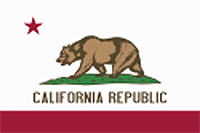Dramatic increases continue as Census data rolls out for California and four more states
 The number of same-sex couples identifying themselves on the U.S. Census grew by 36 percent in California between 2000 and 2010, according to Census data analysis released Thursday by the Williams Institute. And, with the release of data available now for seven states, the total number of same-sex couples for 2010 already exceeds the total reported nationwide in 1990.
The number of same-sex couples identifying themselves on the U.S. Census grew by 36 percent in California between 2000 and 2010, according to Census data analysis released Thursday by the Williams Institute. And, with the release of data available now for seven states, the total number of same-sex couples for 2010 already exceeds the total reported nationwide in 1990.
In Delaware, the increase was most dramatic—79 percent. In Pennsylvania, it was 59 percent. And in the relatively less populated states of Kansas and Wyoming, the increase was 55 percent and 42 percent respectively.
The latest data was released at 12:01 a.m. Thursday by the Census Bureau, which has begun a slow rollout of data, state by state, from the 2010 decennial survey.
In the first week of rollout, data from Alabama and Hawaii hinted at a dramatic increase in the number of same-sex couples identifying themselves on the 2010 Census compared to 2000. Hawaii showed a 78 percent uptick; Alabama a 39 percent increase.
The Williams Institute, a nationally respected public policy research organization focused on issues related to sexual orientation, is analyzing and releasing “snapshots” of the data related to same-sex couple households within hours of the data release from the Census Bureau.
The Census data reports all same-sex couple households, regardless of whether they are legally married, in a legally recognized civil union or domestic partnership, or in a relationship that has not been formalized by law.
Gary Gates, the lead author of the “snapshot” analysis of the data concerning same-sex households, said the Census Bureau is expected to provide a breakdown of the data of just same-sex married couples later this year. But he said that breakdown will not be an accurate reflection of how many same-sex couples have marriage licenses because some same-sex couples identify themselves as being “husband or wife” even if they do not have a marriage license.
Gates said the contrast between the 2000 and 2010 is a “fair comparison” and, in fact, might even been an understated one. That’s because the Census Bureau in 2010 has done better job, says Gates, of “correcting” the numbers. Analysis has shown that about 3 in every 2,000 heterosexual married couples inadvertently check off the wrong gender for their spouse. Without a correction, those mis-identified heterosexual couples would significantly increase the number of same-sex couples.
Only 145,130 same-sex unmarried partners nationwide were identified in the 1990 Census, when the bureau first began separating out data of same-sex couples from heterosexual couples who identified as unmarried partners. In 2000, 594,391 same-sex couples nationwide identified as unmarried partners.
It is already clear that the 2010 data will identify many more couples than in previous years. The count so far, with only seven states reported, totals 184,999.
A national count of same-sex couples for 2010 will be released by the Census Bureau later this year.
In California, the Census shows that 53 percent of the 125,515 same-sex couples are female. About one in five of all same-sex couples in California (21 percent) are raising children. Statewide, there are almost 10 same-sex couples (9.98) per 1,000 households. No surprise, the county with the highest density of same-sex couples is San Francisco, with 33.41 same-sex couples per 1,000 households. The city with the highest density of same-sex couples is Palm Springs, with 115.21 same-sex couples per 1,000 households. Palm Springs is followed by Guerneville (86.58) and West Hollywood (66.7).
In Pennsylvania, the Census shows that 63 percent of the 33,602 same-sex couples are female. Twenty percent are raising children. Statewide, there are 6.7 same-sex couples per 1,000 households. The town of New Hope has the highest density of same-sex couples, with 58.55 per 1,000 households.
In Delaware, which showed the greatest increase in the number of same-sex couples identifying themselves on the Census between 2000 and 2010, 60 percent of the 3,352 same-sex couples are female, and 19 percent of all same-sex couples are raising children. Statewide, there are 9.79 same-sex couples per 1,000 households. The highest density of same-sex couples is in the beach resort town of Rehoboth Beach, with 106.87 same-sex couples per 1,000 households.
In Kansas, the Census shows that 71 percent of 6,176 same-sex couples are female. Twenty-six percent of all same-sex couples in the state are raising children. Statewide, there are 5.55 same-sex couples per 1,000 households. The highest concentration is in the city of Merriam, with 10.23 same-sex couples per 1,000 households.
And in Wyoming, the least populous state in the nation, the Census shows that 73 percent of 1,147 same-sex couples are female; and 28 percent of all same-sex couples are raising children. Statewide, there are 5.06 same-sex couples per 1,000 households. The greatest concentration of same-sex couples is in the city of Riverton, with 12.45 same-sex couples per 1,000 households.


Leave a Reply